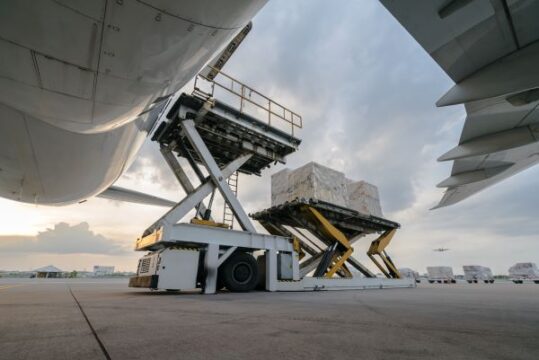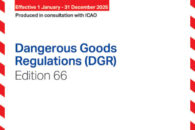
On January 1, 2022, the new, 63rd Edition IATA Dangerous Goods Regulations will take effect. One of the most significant changes from previous regulations is that Packing Instructions PI 965 and PI 968 have been revised to remove Section II. Readers of this blog will now likely have one of the following reactions:
- What the heck is Section II, and why should I care?
- Holy crap! Section II is going away? What in the name of Michael Faraday are we going to do?
If #1 describes you, you can probably skip to the end of the post. But if your reaction was #2—or, honestly, if you ever ship small numbers of lithium-ion or lithium metal batteries by air—you’ll want to keep reading. We’ll answer any questions you’re likely to have.
What is—or was—Section II?
Packing Instructions PI 965 and PI 968 govern standalone lithium batteries. Section II of these Packing Instructions was created to allow packages containing one or two small batteries to be shipped in the same package by air with fewer restrictions, and by people without extensive Dangerous Goods training.
Specifically, these packages could be compliantly shipped without a Dangerous Goods Declaration, and employees involved in their transport needed only “adequate instructions,” not full training.
By the way, the Packing Instructions which govern batteries packed in or with equipment (PI 966, PI 967, PI 969 and PI 970) will still have Section II options available. Section II is only going away for shippers of standalone batteries.
Why is Section II being removed?
Under ICAO regulations, air carriers are required to perform a risk assessment of the cargo aboard every plane, which requires a certain degree of visibility into the contents of each package. Since Section II allowed shippers to ship lithium batteries without a Dangerous Goods Declaration, carriers couldn’t always make an accurate determination of how many (and what type of) lithium batteries they carried.
This lack of visibility, of course, is why FedEx and UPS have prohibited Section II packages since 2017.
Since those are two of the world’s largest air carriers, many lithium battery shippers have already been living without Section II for more than four years.
Without Section II, how will shipments be classified?
Currently, any packages containing more than two batteries (with each rated ≤ 100 Watt-hours or ≤ 2 g lithium content), are considered Fully Regulated shipments under Section IB of the Packing Instructions (up to the net quantity limits for each PI). Now, all packages containing any number of such batteries will fall under Section IB (10 kg net qty limit for PI 965 and 2.5 kg net qty limit for PI 968). That means these shipments will require:
- A lithium battery mark
- A Cargo Aircraft Only label*
- A Class 9 lithium battery label, UN number and proper shipping name*
- A Dangerous Goods Declaration
- Strong rigid outer packaging capable of withstanding 1.2 m drop tests
- Training in Fully Regulated lithium battery transport for all employees involved in handling these packages
*These labels also have to all be on the same side of the package, which will unfortunately require many shippers to use larger packaging than under Section II.
What are the alternatives to Section II shipments?
This is probably a good place to point out that, while the revised regulations eliminating PI 965 and PI 968 Section II take effect January 1, IATA will allow a three-month transition period—so shippers may continue to use Section II until March 31, 2022.
If you’ve been shipping batteries domestically by air under Section II, the simplest alternative will be to make those shipments by ground. That would mean a reset of your recipient’s expectations—instead of receiving batteries overnight, they would get them in two to three days.
Of course, if you’re shipping batteries overseas, ground isn’t an option, and shipment by ocean vessel may be entirely too slow.
That makes Section IB shipments (or IA, if applicable) your only real option for those shipments, and we understand that they’ll require more effort and expense. But there is a small silver lining—you can now put a lot more batteries in the same box! Any package containing 10 kg or less of lithium-ion batteries or 2.5 kg or less of lithium metal batteries falls under Section IB, whereas Section II has always been limited to one or two batteries per package.
Life without PI 965 and PI 968 Section II will be more challenging for a few lithium battery shippers, but will be no different whatsoever for others. Whichever camp you fall into, of course, help from the experts is only a phone call away.
Need answers to your lithium battery transport questions? Call the Labelmaster hazmat hotline—1.800.621.5808, 8 a.m. to 5 p.m. Central, Monday through Friday—and speak with one of our experts!
Make sure your shipments are safe and in complete compliance with a full line of solutions from Labelmaster—a full-service provider of goods and services for hazardous materials and Dangerous Goods professionals, shippers, transport operators and EH&S providers.



Can I still use section II of 967?
If a consignment qualifies for handling under the requirements of Section II of PI’s 966, 967, 969, or 970, as well as any relevant and applicable state and or carrier limitations, then those sections are available to consignors who determine they apply.
The information provided here is intended for general informational purposes only and are not a substitute for official regulatory guidance. This response may include references to applicable laws and regulations, which are subject to change. Users are responsible for verifying the accuracy and applicability of any information provided against current official sources, such as federal, state, or international regulatory bodies. This response does not constitute legal, professional, or compliance advice. Labelmaster assumes no responsibility for any errors, omissions, or misuse of the information provided and shall not be held liable for any direct, indirect, or consequential damages resulting from its use. Users are encouraged to consult the appropriate regulatory authorities or qualified professionals for specific guidance.